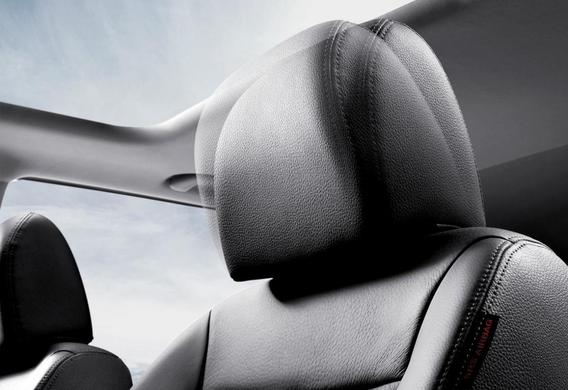
The first head restraints of the car seats appeared in the late 1960s.
They were developed by B. Baren ' s installed in American cars, but only at the owner's request.
Standard equipment for the automotive head restraint became in 1968. This is the first time Mercedes-Benz has used this decision for its models.
And only 40 years after the arrival, international standards were adopted for front seat head restraints.
Functions and types of head restraints
The function of the car seat and the head restraint as part of it is to ensure comfort and, most importantly, safety of the driver and passengers of the car.
The head restraint is located at the top of the chair.
Constructive resolution of these parts makes it possible to significantly reduce the possibility of injuries to the cervical spine of the driver and passenger in the accident.

There are two types of head restraints-passive and active.
Passive, or stationary, may be fixed or removable. The stationary passive head restraint is generally an extended extension of the seat-back. Most vehicles are equipped with removable head restraints. The adjustment of this kind of device is done manually-pull up or pressure down-and press the button.
Of course, passive head restraints are effective only when they are individually adjusted; otherwise, the reliability of the protection is "no".
The active mechanical restraints of the vehicle seats use, as their name is clear, a system based on mechanics. When the rear of the vehicle is impacted, this system works as follows:
-Inertial force crushed the body of the passenger in the back of the chair's chair associated with the active head restraint associated with the active head restraint;
-when the anchor is moved rearward, the active head restraint, under the influence of the lever system, shall be moved forward 60 mm and up by 40 mm. This offset significantly reduces the distance between the head of the seating position and the head restraint and reduces the relative acceleration in the reverse movement;
-the hard spring system shall return the head restraint to its original position as the passenger's body pressure on the seat-back is reduced.
To increase the efficiency of active mechanical head restraints, special designs are used for the manufacture of the pillows. The special profile and the special filler zones contribute to optimum load distribution and protect against "whiplash" injuries, which often occur in the cervical spine, when, as a result of impact, the neck is rapidly bent, and then also sharply straighter.
The electrical active head restraint is operated by commands received from the onboard computer and is operated simultaneously (usually) with airbags.
When the vehicle is colliding, the control module sends a signal from which the pyrotechnic unit activates the head restraint.
Active electrical head restraints are most reliable and convenient. They are equipped with options that allow individual adjustments to be as accurate and comfortable as possible for the seated.
The advantage of electrical head restraints in front of the rest of the safety systems is that they can be reused after operation.
The installation and removal of active head restraints, both mechanical and electrical, are performed only by specially trained personnel in the relevant centres.
Head Restraints with Advanced Functions
In recent times, there is a high demand for head restraints with enhanced functionality.
Modern technology allows monitors, audio amplifiers and acoustic devices to be mounted in these front seat seats.
The use of multi-purpose head restraints allows ergonomic use of the vehicle's free space and create additional comfort for passengers.









